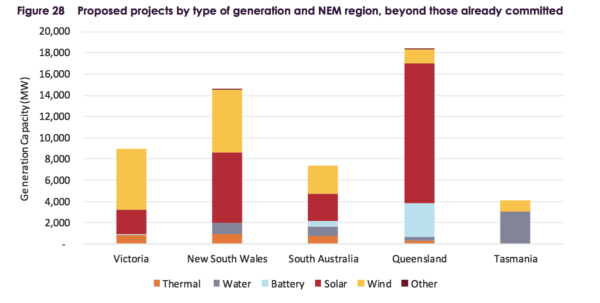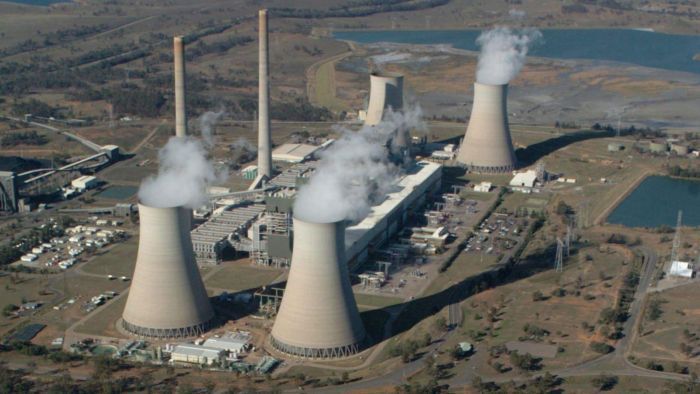The 2019 ESOO ominously forecasts a summer punctuated by a high risk of “simultaneous unplanned outages during hot days.” AEMO places the blame for these expected outages squarely at the feet of the NEM’s ageing thermal generators, many of which are approaching retirement age, most notably the Liddell power station.
Clean Energy Council (CEC) Chief Executive Kane Thornton said the AEMO report identified significant challenges as a result of the increased withdrawal and reliability issues for ageing coal-fired power plants, combined with a lack of policy to encourage new investment in generation into the future.
Retailer Obligation
For the first time, the 2019 ESOO considered whether the evidence of concern was strong enough to trigger an obligation on retailers under the Retailer Reliability Obligation (RRO). However, taking the Liddell example, the station’s gradual closure, one unit retiring at a time, the plant does not meet the “material reliability gap” threshold necessary for AEMO to trigger the RRO.
Therefore, unless mitigating actions are taken in advance, especially in Victoria and New South Wales, “generator outages will leave the region exposed to significant supply gaps and involuntary load shedding during peak electricity demand.”
AEMO’s Managing Director and CEO Audrey Zebelman said that the analysis demonstrates the need for urgent action and prudent planning and investment in the sector to deliver affordable and reliable electricity supply to Australian consumers all year round, but particularly during the summer period.
Zebelman assured consumers that AEMO is working hard throughout the NEM to secure additional resources to bolster the energy apparatus as it wilts under the strain of peak summer demands. However, she noted that these kinds of reactionary patch-work jobs are no long-term solution.
Deliberate action
“A more measured course is to take a number of deliberate actions that addresses the challenges to our ageing coal fleet and which meet the need for secure and dispatchable supply,” said Zebelman, “whilst also taking advantage of Australia’s natural resources.”
The deliberate actions Zebelman refers to are already in place, such as AEMO’s Summer Readiness Plan. But other actions will require AEMO to be adorned with special or upgraded powers. Some of these powers are hardly exceptional, some are merely adoptions of the international norm, such as a new reliability standard to assure sufficient resources at peak demand during 90% of the time. This standard would finally account for the sorts of “tail-risk” that result in simultaneous unplanned outages.
More interestingly is AEMO’s desire to develop new markets for essential services so it can more efficiently pay suppliers. But the most particular and obvious deliberate action is “the acceleration of critical upgrades and construction of interconnectors and transmission to enable better use of existing and new supply resources.” This is the main problem, after all, what good is Snowy 2.0 if it doesn’t have a new transmission line, such as HumeLink, proposed by Transgrid in its current RIT-T.
Moreover, if the acceleration of critical upgrades and construction of interconnectors and transmission infrastructure is not enacted then the abundance of future projects, the majority of which is solar PV, will not be able to replace the retiring generational capacity.

The CEC’s Thornton noted that transmission investment would relieve the pressure on the power system and make the best use of the electricity we already have available. But “without policy certainty to ensure investments in our energy system are made efficiently where they are most needed, we are left with using emergency measures to keep the power on over the hottest parts of summer. We need policy that will encourage new clean energy projects to be built before the old coal plants close – not leave us scrambling after they have already closed down.”
Clearly AEMO is tired of the political inertia on energy, especially as the blame for the repercussions of which are often passed down to AEMO. “At present,” concluded Zebelman, “AEMO does not have the tools or mechanisms to enable cost effective access to sufficient resources for all hours of the year, so we are forced to use more emergency actions that impose unnecessary risk and costs on consumers, just at a time where the goal is to pursue more cost-effective outcomes.”
AEMO is stuck between a rock and a hard place, and that’s not the spot you want to be caught when the Australian summer rolls around.
This content is protected by copyright and may not be reused. If you want to cooperate with us and would like to reuse some of our content, please contact: editors@pv-magazine.com.









1 comment
By submitting this form you agree to pv magazine using your data for the purposes of publishing your comment.
Your personal data will only be disclosed or otherwise transmitted to third parties for the purposes of spam filtering or if this is necessary for technical maintenance of the website. Any other transfer to third parties will not take place unless this is justified on the basis of applicable data protection regulations or if pv magazine is legally obliged to do so.
You may revoke this consent at any time with effect for the future, in which case your personal data will be deleted immediately. Otherwise, your data will be deleted if pv magazine has processed your request or the purpose of data storage is fulfilled.
Further information on data privacy can be found in our Data Protection Policy.